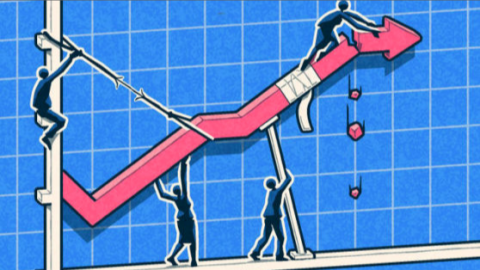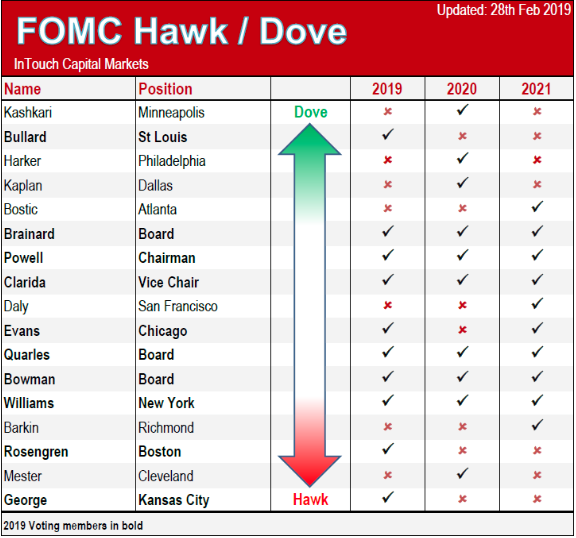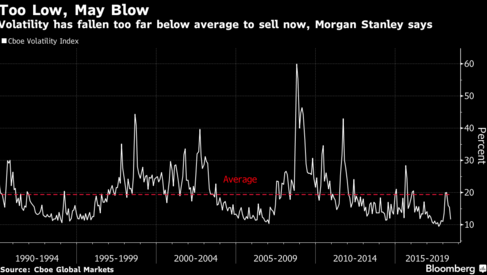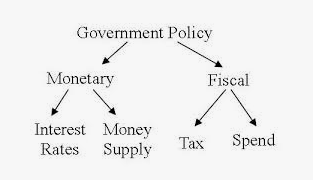There was a great deal of follow through from Friday in the markets for much of the day yesterday… until President Trump issued a tweet that declared he would announce a decision on the Iran Nuclear Treaty at 2:00 p.m. EST Tuesday. On Monday, the Dow, S&P 500 and Nasdaq Composite finished with gains, but off their intraday highs. At one point, the Dow was up nearly 200 points and the S&P 500 had broken slightly above its 50-DMA.
With pending headlines set to break on the Iran decision, oil futures continued to drop on Tuesday. Earlier in Monday’s session, prices rose to levels not seen since late 2014 as investors bet that Trump would withdraw the U.S. from the Iran agreement. Equity futures are also under pressure Tuesday morning with volatility slightly higher. All eyes and ears will be peeled for the 2:00 announcement.
Iran’s President has been vocal with regards to President Trump’s sentiment on the existing treaty that was agreed to by China, Germany, France, U.K. Russia and the U.S. under the Obama Administration.

“In defiant speeches on Monday and over the weekend, President Hassan Rouhani offered the clearest glimpse yet of how his country plans to react if Trump withdraws from the nuclear pact by a self-imposed deadline on Saturday. Rouhani rejected a series of concessions demanded by the Saudis and the U.S., including limits on Iran’s ballistic missile program—which isn’t covered in the nuclear pact—and its interference across the Middle East.
If the U.S.’s goal is for our country to have no independence and influence in the region, our people will stand against them fiercely as they have done over the past 40 years.”
While President Trump is widely expected to exit the Iran deal, there are numerous ways in which he can proceed with the exit that may prove less harmful than the rhetoric portrayed. President Trump’s choice in the path forward could impact U.S. trade relationships and negotiations that are ongoing.
- Waving sanctions on Iran has been the compelling aspect of the agreement in favor of Iran. This coming Saturday marks the next day in which the sanctions were to be waived once again. But if President Trump drops the Iran deal, the sanctions are left in limbo, whereby the U.S. could then leverage its financial system and employ sanctions on nations buying Iranian oil. (Not the most favorable outcome and one the markets would likely react negatively toward) S. law empowers the Treasury Department to sanction foreign financial firms that transact with the Central Bank of Iran unless that firm’s home country agrees to significantly reduce Iranian oil purchases.
- The White House could drop the Iran deal and allow a 6-month transition period during which negotiations will continue with the nation groups involved and while the Treasury determines compliance metrics. This gives Europe and China time to negotiate new terms as well. If Trump follows this model, it would likely push off the majority of Iranian export reductions until the first half of next year. (A more favorable outcome and one the markets would find less harmful although the initial reaction may still spark volatility)
- In the least disruptive scenario possible, Trump would re-impose sanctions but signal the United States will not penalize other countries that do business with Iran. Since unilateral U.S. sanctions prohibit American companies from transacting with Iran, it would maintain the status quo.
The most fearful element for the U.S. economy regarding the Iran decision is the impact on oil prices, which are widely perceived to move higher should Iranian oil come off the market. Inflating oil prices lead to higher input prices and lower gross margins for corporates. But it is important to put today’s $68 dollar a barrel and $2.85 gasoline at the pump prices into perspective. Prices for both were considerably higher under the Obama Administration and failed to curtail consumer demand, retail sales or corporate profits from rising. In fact, there has never been a time in the modern era whereby higher energy prices impacted the consumer.
Moreover, it’s not just crude inflation the markets continue to contend with, bond yields have and continue to head higher in 2018. The 2-year note yield, the most sensitive to shifting expectations for monetary policy, was little changed at 2.499% today. The short-dated note on Friday logged a weekly drop of 1.5 basis points.
The gap between the 2-year and 10-year Treasury notes, often considered the heart of the yield curve, was at 45.1 percentage points. Concerns that the yield curve could eventually invert, with short-dated yields moving above long-dated yields, is keeping investor sentiment below what would be expected with corporate earnings surging in Q1 2018. An inverted yield curve has often preceded a recession. When it comes to inflation and rising rates from the FOMC, Ed Yardeni of Yardeni Research offered the following in a research note on Monday.
“The market has been mostly zigging despite six Fed rate increases since late 2015. That’s because Fed rate increases confirm that U.S. economic growth is sufficiently robust to absorb the hikes. So the normalization of monetary policy seems to be bullish.”
The economic data calendar is light today, but the Federal Reserve issued a more recent reading on consumer credit yesterday. The Federal Reserve said consumer credit in March grew at a seasonally adjusted annual rate of 3.6%, or $11.6 billion, to mark the slowest gain since September. Economists polled by Econoday expected a $15.6 billion increase. February’s gain was revised higher to show a $13.6 billion advance instead of a previously reported $10.6 billion gain. Revolving credit, namely credit cards, fell 3%, marking the second drop in a row. It’s still narrowly holding above the $1 trillion level. For all of the hoopla surrounding rising consumer credit and debt levels in America, the direction pattern seems to coincide with the manageability of said debt, something that wasn’t altogether present leading up to the 2008 economic recession.
“Despite rising levels of debt, loan growth remains at historically low levels. Moreover, as a percent of assets, household liabilities continue to fall, suggesting households are better capitalized,” said economists at Wells Fargo.
The economic calendar beefs up a bit through the end of the week. On Wednesday we’ll have the release of the Producer Price Index, followed by Thursday’s Core CPI reading. Friday will cap the week with another reading on consumer sentiment.
Finom Group is expecting a rather complacent market in the early hours of trade Tuesday morning that leads to greater angst in the afternoon trade and leading up to the 2:00 p.m. announcement from President Trump. As it pertains to investors, there is not likely a lasting adverse to markets from dropping the Iran treaty. For traders, there may be heightened volatility post the announcement that breeds trading opportunities for those active portfolio managers.
As always, Finom Group continues to trade what the market gives. Yesterday the market found retail stocks battered and bruised with headlines dispatched from Deutsche Bank.
“[W]hile Holiday marked a solid improvement across the group, we think valuation is now ahead of itself as we believe fundamental upside is limited. We have concerns that an earlier Easter (4/1 this year vs. 4/16 last year) combined with unfavorable weather in March and April may have pressured comp sales during the first quarter.
In addition to the notes from Deutsche Bank’s Paul Trussle, Telsey Advisor Group picked up coverage of Amazon. Telsey Advisory Group initiated coverage on Amazon at outperform, saying the e-commerce giant should capture nearly 10 percent of total retail sales by 2020. Amazon is already on track to become the No. 1 apparel retailer in the U.S., according to Morgan Stanley.
While Finom Group tends to agree with the various analysts’ notes and initiated coverage reviewed, we took the opportunity to engage one department retailer we felt was unduly caught up in the chaos of the retail sector sell-off. Additionally, Finom Group’s trade of the day in the volatility complex worked out once again and as depicted below.

Subscribe to finomgroup.com today and access our premium weekly research, trade alerts and more!
Tags: SPX VIX SPY DJIA IWM QQQ XLE










